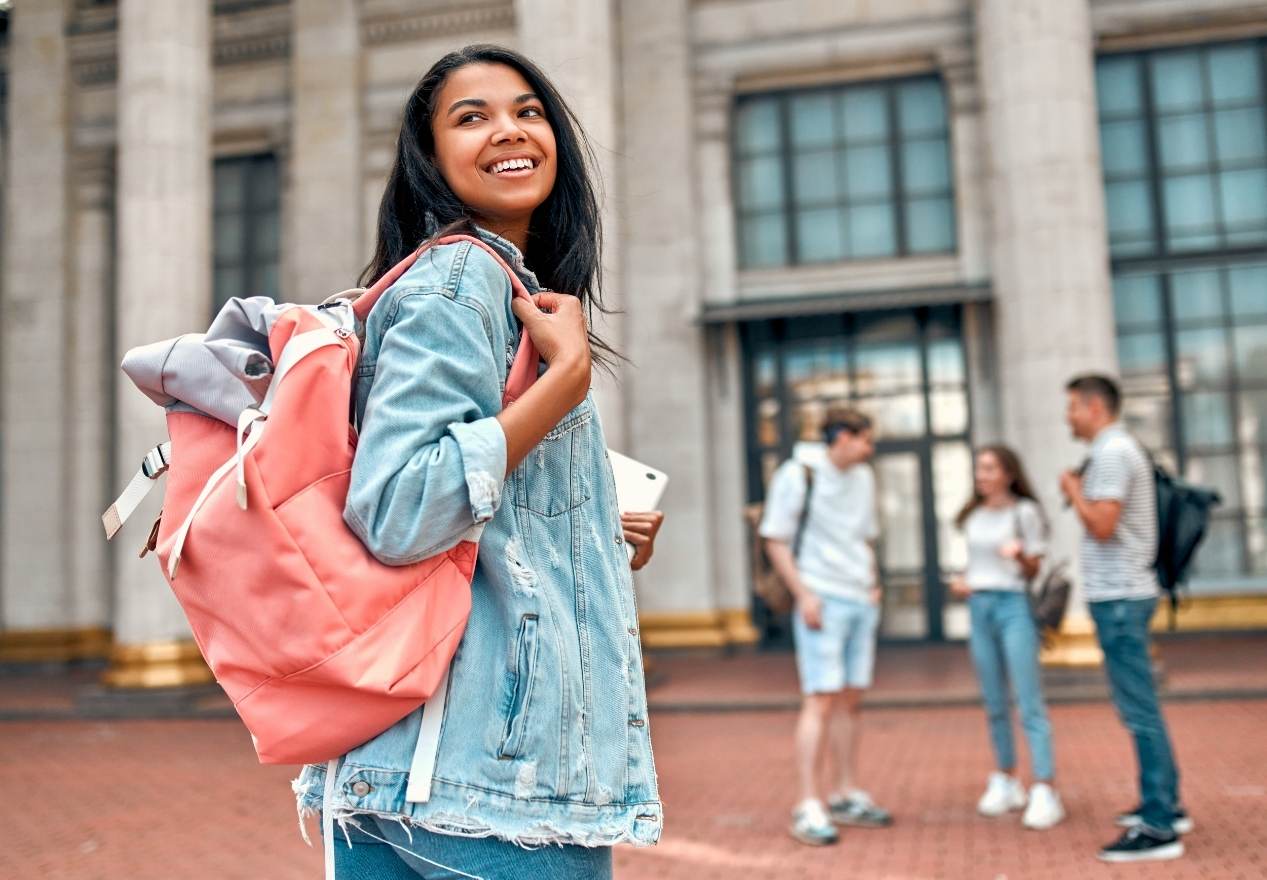College Safety Tips – 9 Ways to Stay Safe on Campus

When Keren is not actually tapping away at her keyboard,…

College is an exciting time. For many, it’s their first time living away from their parents and an opportunity to forge new relationships. It’s also a season for exploring one’s capabilities and boundaries.
With everything that’s going on around you and all the adventures that await, it’s important not to forget about safety. This reminder may seem like a buzzkill after the whirlwind of changes and activities but it’s a legitimate concern. We don’t mean to worry you but statistics about campus violence against women show that it pays to be vigilant against potentially dangerous situations.
Knowing a few college safety tips can help you ensure that your university experience remains positive, enriching, and safe.
Here are nine college safety tips to remember:
1. General Safety Protocols

Your dormitory is where you spend the majority of your time. To ensure your safety, take the following precautions:
- Familiarize yourself with the layout of the campus. Identify safe, well-lit routes and avoid secluded areas, even if they get you there faster.
- Whatever happens, don’t lend your key or ID to anyone. Doing so provides people with the tools they need to break into your dorm unannounced and gain access to private information such as where you live, your schedule, and so on.
- Sign in visitors, including people you know. The logbook records visits and makes guests easier to track, significantly reducing the likelihood of them causing you harm.
2. Keep Things Locked
Your dorm is where you store your valuables and daily necessities. Even if you’re in a hurry, exercise caution and lock up your belongings before leaving.
- Close your door. This will help avoid theft. It can also prevent an assault from someone who has entered your room without permission.
- Invest in locks for your laptop and valuables. This will help keep your belongings secure even when you’re not around.
- If you have something you can’t afford to lose, invest in a contact sensor. It will trigger an alarm should anyone try to touch it.
- Close and lock your windows. Keep blinds and curtains closed so thieves can’t get in.
3. Get To Know Your Campus Safety Office
Your campus safety office has a safety plan in place to ensure student safety. This includes information on how to stay safe on campus and useful online safety resources. Use it to your advantage.
Call or email ahead of time to become acquainted with the services they provide. Most colleges provide safety maps that include information on which paths are secure, shuttle services within a one-mile radius, emergency systems, and campus escort services.
4. Maintain Privacy on Social Media
Social media is a great place to make connections and stay in touch with loved ones, but posting too much personal information can put your safety at risk. Avoid posting information on where you live and your schedule. Make sure to disable location services and make your profile private so that only those you know have access to it.
5. Stay Safe When You’re Out and About

Being out in the dark or walking alone in a secluded place can increase your risk of falling in harm’s way. Stay safe by:
- Traveling in groups or have a buddy system in place. This will minimize your chances of being targeted.
- Trust your instincts. If something doesn’t feel right, there’s a good chance it isn’t. Don’t ignore your instincts and sit around waiting for something to happen. Remove yourself from the situation as soon as possible.
- Because most debilitating drugs are not easily detectable, you have no idea what someone may have slipped into your drink. Buy your own drinks and keep them covered.
- Never leave without a friend, and never allow a friend to leave without you. Honor the girl code to ensure each other’s safety.
- Never drink in excess as it makes you an easy target for an offender.
6. Carry Cash
While credit and debit cards are convenient, they aren’t always reliable due to network failures, technical glitches, and similar errors. Be a Girl Scout and always carry a certain amount of cash with you just in case of an emergency.
7. Be Careful Getting Into Your Car
Did you bring your ride to college? Keep safe when using your car by remembering the following:
- Before getting into your car, check the backseat or under the car. There could be a predator lurking — you never know!
- Keep your key on hand. You don’t want to be rummaging through your bag if a suspicious person suddenly approaches you.
- Once you’ve arrived safely, park in a well-lit spot and look around to see if anyone is loitering. This will help you avoid a scary run-in.
- Don’t multitask or use your phone while getting into or out of your car. This makes you appear vulnerable, making you an easy target.
- Make sure your valuables are securely stored inside your vehicle. Keep them out of sight as this increases the likelihood of theft.
8. Uber Safety Tips

Uber is easy and convenient but it isn’t without risk. Here’s what you should be aware of when hitching a ride:
- Compare the license plate, make, and model of the vehicle to the information provided by the app. On the same note, match the driver’s face with their app photo.
- Instead of asking “are you my ride?” ask, “who are you waiting for?” This forces the driver to state your name.
- Request a ride from a safe indoor place and stay there until it arrives.
- Honor your and your driver’s personal space by sitting in the backseat. It significantly increases your chances of escaping should you feel trapped.
- Don’t reveal personal information. The driver already knows what he or she needs to know: where you’re going and how you intend to pay for the ride.
- Tell someone where you’re going and the specifics of your ride. If possible, share your location with your friends so that they can help you if the situation calls for it.
- If you had a negative experience, rate the driver on Uber accordingly. This will help the company weed out suspicious employees who may harm customers.
9. Learn How To Defend Yourself
The ultimate and most kick-ass way to protect yourself is to learn some self-defense. If you aren’t inclined to take a self-defense class, you can carry safety equipment like pepper spray, a stun gun, or a defensive/tactical flashlight.
Personal safety apps like Noonlight can also come in handy. Among its personal safety features is a safe button. When pressed, it alerts local police and shares your immediate location with them, helping you quickly get the assistance you need.
Safety First
Enacting safety measures is like birth control and insurance. You don’t know when or if you really need it but it’s a good practice all the same. After all, the best way to prevent something unpleasant from happening is to keep yourself away from situations that may leave you compromised and vulnerable.
Stay safe by using our college safety tips.
Save the image below to Pinterest so you can come back later!

When Keren is not actually tapping away at her keyboard, you’ll find her staring into space or drinking copious amounts of coffee. But make no mistake, she's hard at work even then. Come close enough and you’ll hear the whooshing noise of countless words as they go whizzing by - in her head of course.






